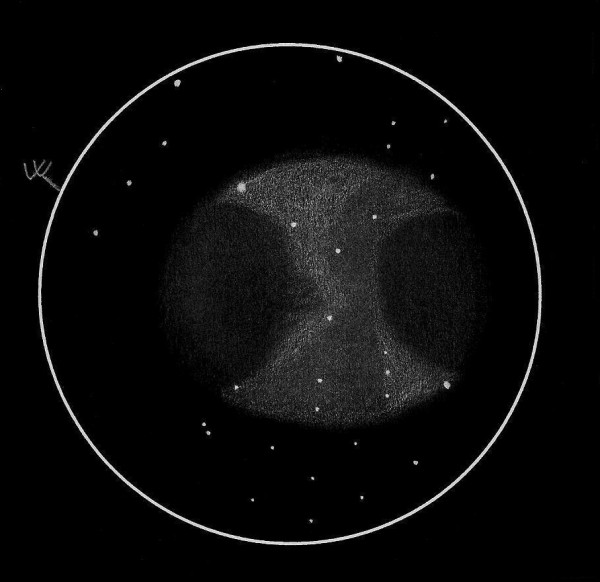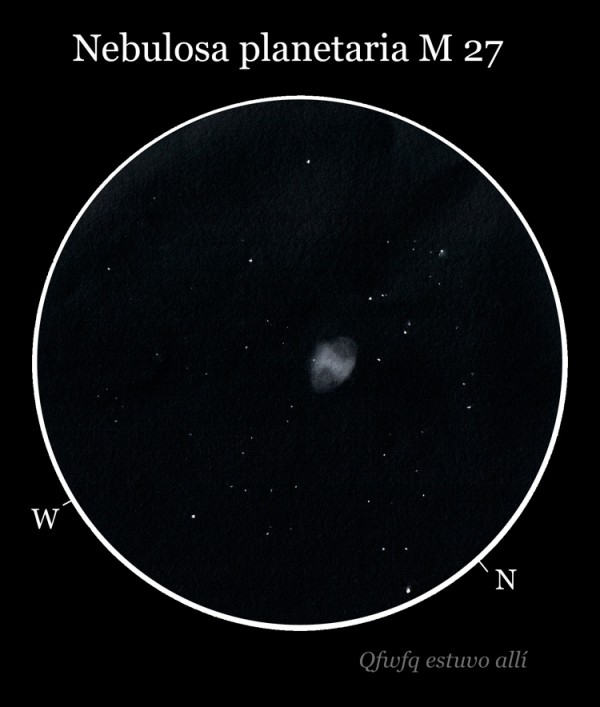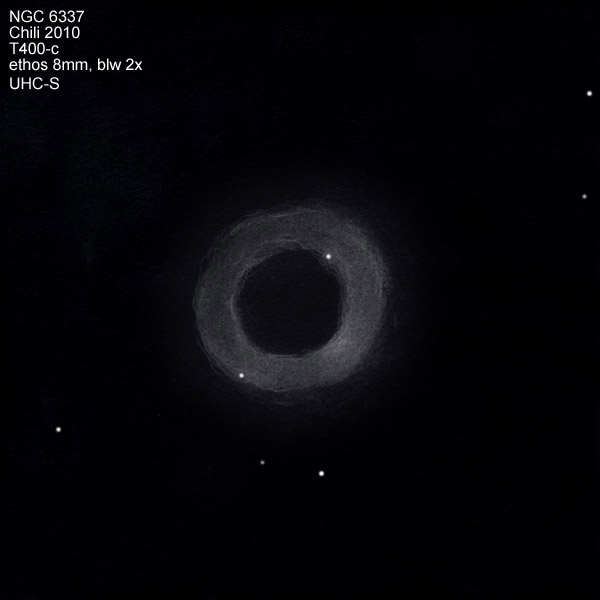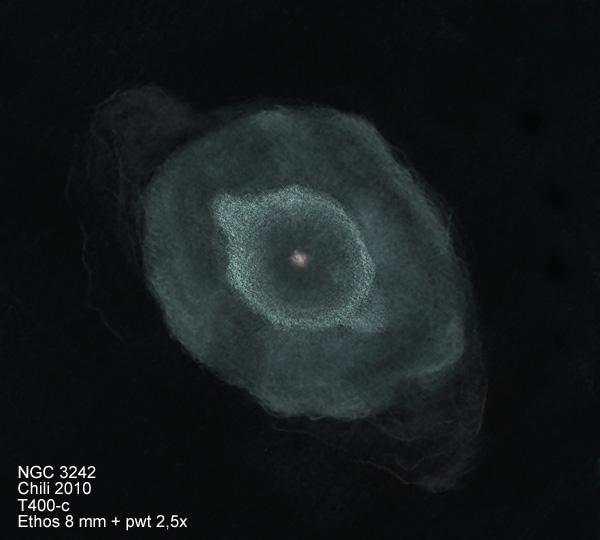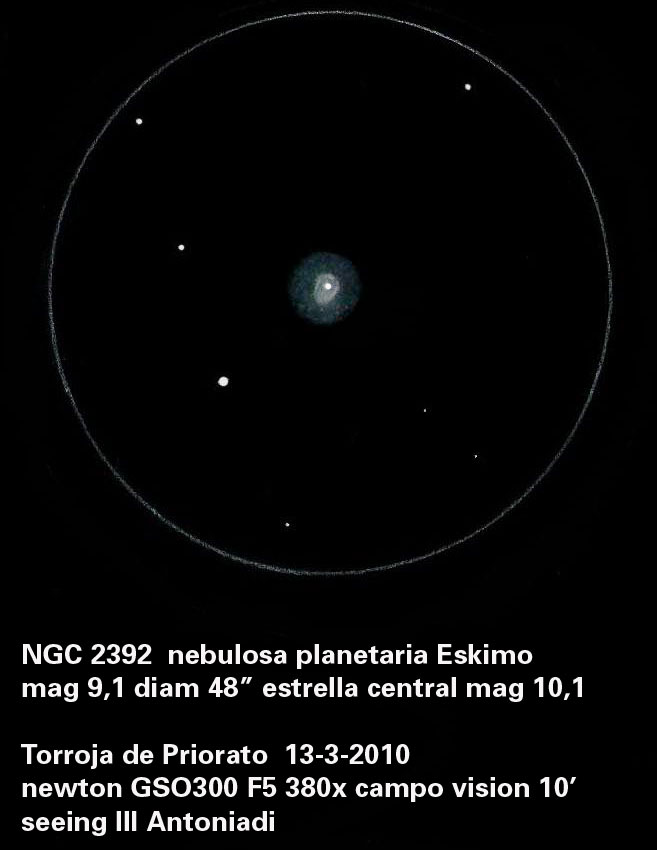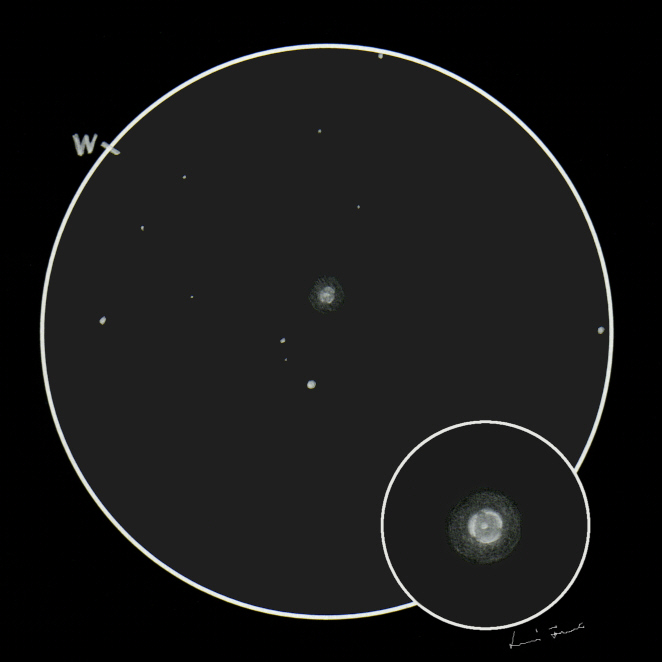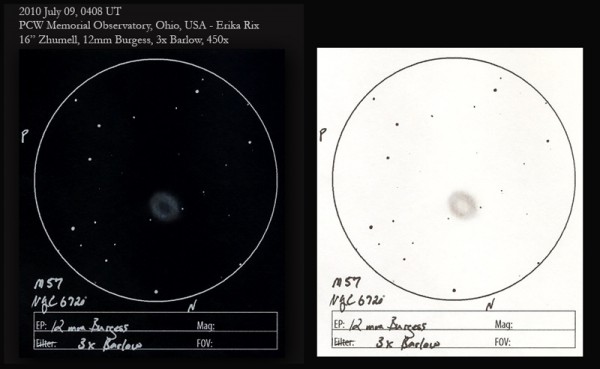
2010 July 7, 0408 UT
M57, NGC6720, the Ring Nebula
Constellation Lyra, Planetary Nebula Type 4+3, ~1500-2000 light years away
0>71”, m8.8v
PCW Memorial Observatory, Zanesville, Ohio USA – Erika Rix
16” Zhumell, 12mm Burgess, 3x Barlow, magnification 450x
Sketch created scopeside with white photocopy paper, #2 pencil,
ultra-fine black marker. Template from www.perezmedia.com.
M57 never fails to please, just like other objects such as the Double
Cluster, M13 and M27. This is the first time I’ve used the 16” on this
planetary nebula and took advantage of the aperture to increase
magnification. I was particularly interested in looking for structure
within the ring as well as a richer star field. It most likely wasn’t
the optimal magnification to use, but seeing was rock steady and I was
itching to give it a try.
This object resembled a scrunched up American football, not quite as
oblong, but most certainly not completely round. The two ends were
fainter than the middle portions of the ring, which had strands of
brightened areas to the NW and SE sections of the ring. There was one
particular area to the northern area of the ring that could have passed
for a star, but not defined. It was more or less just a bright spot
within the ring. The center of the nebula was a hazy darker gray, also
appearing oblong. I couldn’t detect the ever-elusive central star.
Erika Rix
